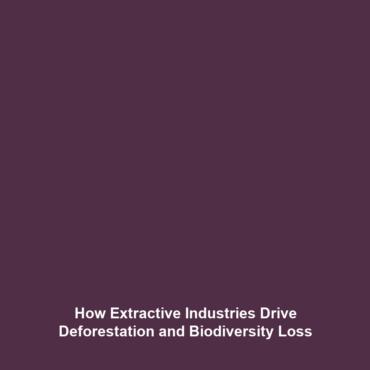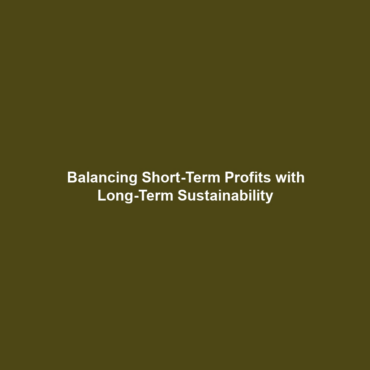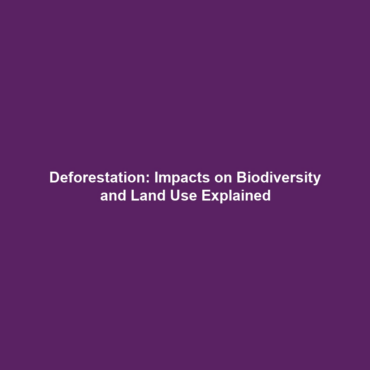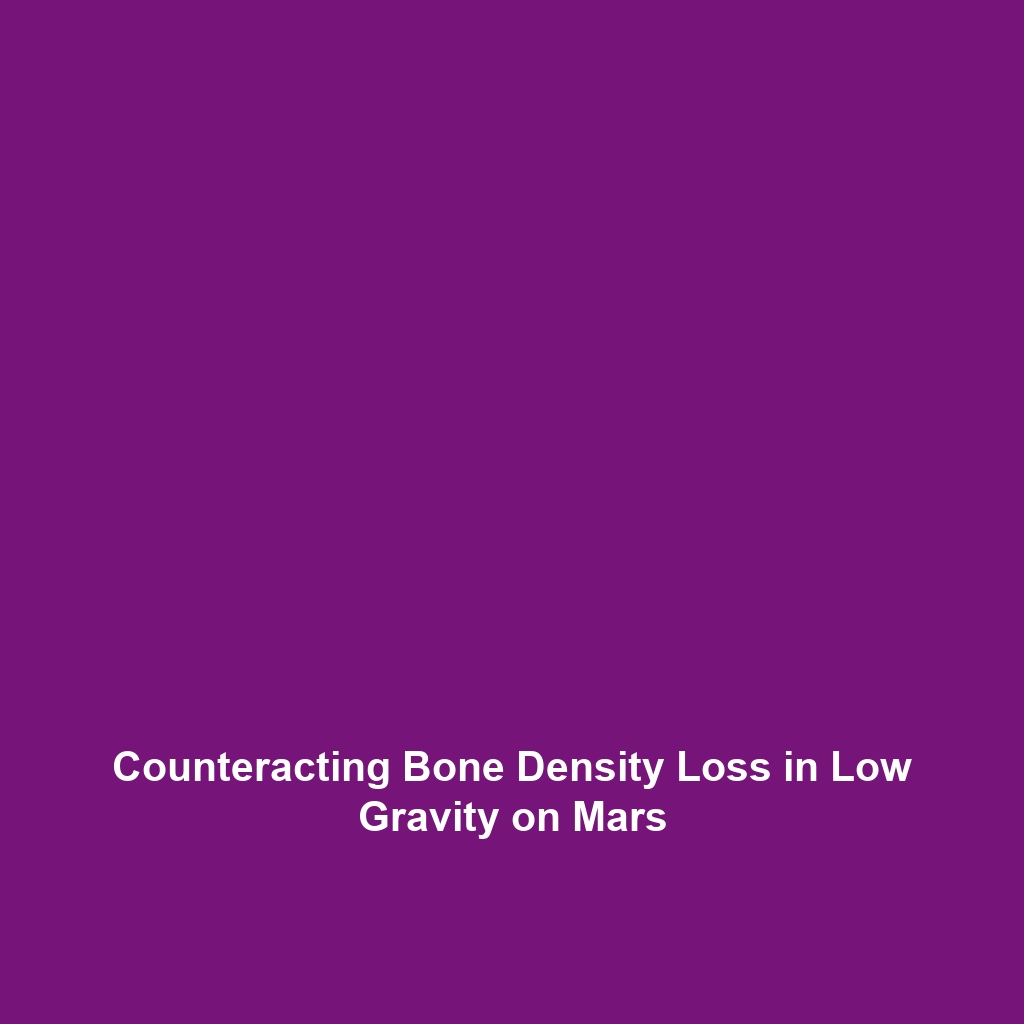“`
The Role of Extractive Industries like Mining and Oil Drilling in Deforestation
Deforestation remains one of the most pressing environmental issues of our time, significantly contributing to biodiversity loss across the globe. Among the prime drivers of deforestation, extractive industries such as mining and oil drilling stand out for their profound impacts on forest ecosystems. These industries not only lead to the clearing of vast tracts of forest but also disrupt local wildlife habitats, further exacerbating the loss of biodiversity. Understanding the role of these extractive activities in deforestation is vital for informing policies aimed at conserving our planet’s remaining natural resources.
Key Concepts
Extractive industries, including mining and oil drilling, are often implicated in large-scale deforestation. Key concepts related to their impact on forests include:
- Habitat Destruction: The infrastructural needs of mining and drilling lead to the clearing of forests, which directly destroys plant and animal habitats.
- Pollution: Extractive activities release pollutants into the environment, affecting soil and water quality and leading to further degradation of biodiversity.
- Fragmentation: The establishment of roads and extraction sites fragments forests, making it difficult for wildlife to migrate and reproduce.
These principles illustrate how extractive industries contribute to the broader category of deforestation and biodiversity loss.
Applications and Real-World Uses
Understanding how the role of extractive industries like mining and oil drilling is applied in the context of deforestation and biodiversity loss is crucial for developing mitigation strategies. Significant applications include:
- Resource Extraction: Extraction of minerals and fossil fuels plays a critical role in economic development, but often at the expense of forest ecosystems.
- Policy Development: Research on the impacts of extractive industries leads to the formulation of policies aimed at sustainable resource management and conservation.
- Restoration Projects: Initiatives aimed at restoring deforested areas are often implemented as a means to counterbalance the ecological damage caused by extraction.
Current Challenges
Despite the growing awareness of the detrimental impacts of extractive industries on forests, various challenges persist:
- Data Limitations: Reliable data on the extent of deforestation caused by mining and oil drilling is often scarce or unavailable.
- Regulatory Issues: Inconsistent regulations across regions allow extractive industries to operate without stringent environmental oversight.
- Economic Pressures: Economic dependency on extraction hampers efforts to enforce sustainable practices and promote alternatives.
Future Research and Innovations
Future research is critical in addressing the challenges posed by extractive industries on forests. Innovations to watch include:
- Remote Sensing Technologies: Advanced satellite imagery and drones are being developed to monitor deforestation rates and assess environmental impacts in real-time.
- Sustainable Practices: Research into sustainable mining and oil drilling practices is gaining momentum, aiming to minimize ecological footprints.
- Carbon Offset Initiatives: Next-gen carbon offset strategies are being explored, which could finance reforestation efforts in areas impacted by extraction.
Conclusion
The role of extractive industries like mining and oil drilling in deforestation is profound and far-reaching. As we face the challenges of biodiversity loss, understanding and addressing the impacts of these industries becomes increasingly critical. Stakeholders must prioritize sustainable practices and effective policies to limit deforestation and its associated impacts. For further reading, explore our articles on biodiversity conservation strategies and sustainable mining technologies.
“`
This article is structured to engage readers while being optimized for search engines, featuring relevant keywords and providing valuable insights into the role of extractive industries in deforestation and biodiversity loss.



